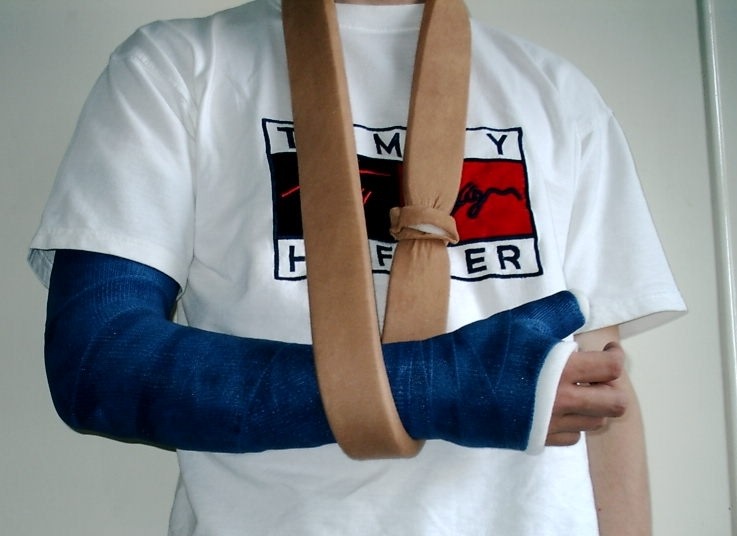How much is it worth…?
This is the seventh Legal Eagle article by our guest writer Tony Carter. Tony is a former police rider, RoSPA examiner and a trained accident investigator; so he’s seen his fair share of both the good and the not-so-good sides of motorcycling. Still biking, he works for the well-known legal firm of McMillan Williams, whose highly qualified team specialises in motorcycling and the law, from insurance claims to motoring offences.

Picture: Wikimedia
Nobody wants to be involved in a crash, but if you are, then at some time following the event, comes the long-awaited insurance settlement. It’s easy to get caught up in who was to blame and to mourn over the loss of your bike and curse the pain of your injuries, but the bottom line and the next big question is very simple; “how much is my claim worth?”
Tempting though it is to dream of a huge payout (to which you may feel you are richly entitled) it’s worth bearing in mind that, in the UK, compensation is designed to put the person in the position they would have been in had they not had the accident; to compensate for losses arising, not to provide a windfall for the injured party or to punish the wrongdoer.
When it comes to compensation (or ‘damages’) in a personal injury claim, there are two elements to consider; ‘General Damages’ and ‘Special Damages’ – the latter including future losses. General Damages are those that include the injuries sustained, pain and suffering, and any inability to lead your normal life as a result. Despite what you may have heard, payments from this source are surprisingly modest. Special Damages on the other hand, deal with all the quantifiable financial losses that the injured person has suffered, or is likely to suffer, as a result of the crash and for the rest of their life. Broadly speaking, it’s the Special Damages cases that have racked up some of the biggest headline-grabbing claims figures.
General Damages
In the case of injury, and logically enough, the payout is linked to the severity of the injury. So, for example, severe bruising would be classed as fairly minor, whereas a brain injury or paraplegia falls into the category of catastrophic injury. But what if you have several injuries? Well it’s not just a matter of totting up the figures for each to reach a total. Generally speaking, if you suffer several different injuries, the total figure is usually discounted to allow for the fact that there is overlap between the pain and fall-out from the injuries combined. In other words, there’s no double-counting, but the cumulative impact is taken into account.

Albert Herring
So, what’s the tariff?
When I speak to groups and clubs, one of the questions I always ask out of interest is how much they think a catastrophic injury like a severe brain trauma is worth. The answers range from half a million pounds to several million. The truth is rather different.
Unlike the USA where multi-million-dollar awards for these injuries are common, in the UK the maximum someone can be awarded for a severe brain injury or tetraplegia (i.e. paralysed from the neck down) is a little over £325,000 – not much for a life-changing injury caused by someone elses negligence. At the opposite end of the scale, a minor injury like cuts and bruises may be worth less than £1,000.

Pic: wikimedia
So how much do I get?
Everyone and his mate will offer a value, and if you speak to 10 riders who all sustained similar injuries, the figures will often vary considerably. This is because every case is judged on its merits. Additionally the skill of your legal team and your own ability to provide evidence will also have a bearing. For example, I always advise people to keep a diary and enter all your costs, keeping the receipts. The defendant’s insurers will often try to mitigate these expenses, but if you have it all in a diary, backed by documentation, it makes them much harder to contest.
To start the ball rolling, you’ll need expert opinion, which means an independent and qualified expert for every separate injury. In the case of catastrophic injury, the medical assessments will be on-going from an early stage in the claims process and may well involve a number of medical experts; an orthopaedic expert for a broken leg, a neurologist for a brain injury and so on.
Special Damages
So much for medical issues. But things don’t have to end there. ‘Special Damages’ cover all the quantifiable, financial losses that the injured person has suffered, or is likely to suffer as a result of the crash and the injuries that were sustained. This includes basic things like out-of-pocket expenses – travelling costs; car parking; prescriptions; the cost of replacing damaged, personal items, such as clothing, crash helmets and the like.
But impacts can be wider; if you walk the dog every evening and can no longer perform this task, then you could pay someone to walk your dog and this would be a claimable expense. Perhaps you need someone to shop for you; this too can be be claimed back.
One of my colleagues recently argued successfully that a long-haul flying client had injuries that meant he could no longer fly economy class because of the possibility of developing a deep vein thrombosis from cramped conditions. So he included in his Schedule Of Loss two business-class long-haul flights (the amount being the difference between an economy class ticket and business class ticket) a year, as there was substantially more legroom in business class; the defendants accepted this argument and agreed to the claim.
Tony Carter is employed by MW Solicitors and Bigbikemad.com accepts no liability for accuracy, error or omissions in this article.
The Doctor’s Bill
In the very serious cases, such as a severe brain injury or tetraplegia, then this is where the costs can go soaring. For example, the person might need 24-hour, around-the-clock medical care; they may need to have their home adapted; or they may need to have a specially-adapted vehicle, which in turn will need to be replaced every few years.
Richer and Poorer
There are many times in life when it’s good to be rich, and in terms of payout, an accident could be seen as one of them. This is because the figure added for loss of earnings is bound to be higher for a city banker than for your local brickie or plumber. Similarly, career prospects of someone with a first class degree are going to be greater than someone with no qualifications as so on. Someone expecting a high pension could also claim more for this.
From the narrow point of view of the claim figure, it also helps to be young (more years ahead of you to claim for) and to have children. If the injured person has young children and he or she is unable to work, then the children’s future educational needs also have to be considered, especially if they may be considering going to university later.
A licence to print money?
There is no actual list of what you can and can’t claim for, but you should think again if you think an accident is a route to riches. Headline figures of 6 figure payouts should not obscure the fact that settlements are made to compensate the victim, not enhance his or her lifestyle. So if you are driving a 20-year-old banger of a car and then hire a Ferrari to get around after a crash, the other side are going to challenge that part of the claim on the basis that it’s not like for like.
The clock is ticking….
Bear in mind that you don’t have forever to file a claim. Limitation in personal injury cases is generally 3 years from the date of the accident. However, there are cases where you may not realise that you have suffered a significant injury or that you may have a claim until later; in such cases, limitation may run from what is know as your ‘date of knowledge’ .
Speaking of time, some good advice is ‘don’t rush.’ Many of the high-volume non-specialist law and claims-management firms will make promises of a fast settlement which can lead to a number of issues.
Firstly, if the claim is settled before you have fully recovered and you sign a full-and-final settlement, you will not be able to re-open the case if your problems get worse. There is also a fair chance that your claim will have been undervalued for a quick settlement which could leave you out of pocket.
That said, there are some minor injuries that do heal quickly and have no lasting knock-on effect and you should use common sense in deciding whether to get a quicker payout in those cases. Just for reference however, typical settlement times can be broken into three time periods:
Minor Injuries – 12 – 18 months
Moderate Injuries – 18 – 36 months
Serious and/or Catastrophic Injuries – 3 years +
In the case of a brain injury, you are looking at a potential claim period of 5 years or more, as it takes a number of years before the doctors can determine the true severity of the injury and its long-term effects. Once the injury has stabilised and the likely capability of the individual can be established, then an accurate value can start to be calculated for compensation.
Conclusion
Settling an injury case, especially a serious one, is where getting good legal and medical advice really does count. So does keeping good record and driving the case forward yourself by keeping communication clear, complete and punctual. In many cases if you select a good team, support them with good record keeping and communication, many cases can be settled without the need ever to issue proceedings or to see the inside of a court room. This means getting your payout quicker.

